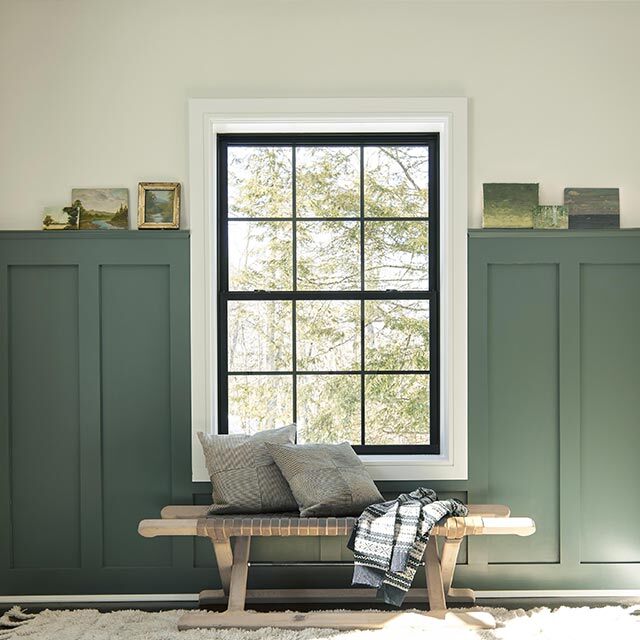If you’re looking for added decorative accents you can add to your new home, look no further than molding. While you can install molding in just about any room in your home, where and how it’s applied will vary. So first, let’s discuss the variations of interior trim and molding you’ll run into. Then, once you understand your options, we’ll discuss the pros and cons of having molding in your home.
Molding can be applied to the following:
The Ceiling and the Walls

Crown Molding
This can also be called ceiling molding, where the wall combines with the ceiling. Aside from baseboards, this is the most popular interior molding you’ll find. To incorporate this kind of detailing, your home doesn’t necessarily have to be historic or traditional. While crown molding can be intricately designed, there are more modern variations. For example, some trending 2023 decor articles have mentioned choosing a stained reclaimed wood variation or going for a monochromatic look where the molding matches your wall paint.

Panel Molding
Panel Molding provides the illusion of panel walls. It provides visually appealing depth to your space and supports either traditional or modern decor.

Chair Rail
Firstly, a chair rail is a decorative accent placed on the lower half of the wall, usually as a horizontal accent. Historically, a chair rail protects the wall from furniture scuffing and damage. Recently, however, its primary purpose has been purely decorative. A design trend for 2023 includes using wallpaper, and a chair rail is a beautiful addition to a wallpapered room.

Wainscoting
Decorative molding is installed between the baseboard (floor) and the chair rail. Wainscoting provides a paneling effect because it lines and borders the lower half of the wall.

Board and Batten
A type of siding where thin strips of wood molding are placed over seams of panel boards. This is seen on either the interior or exterior of a home and it adds depth and texture to your space! The difference between this and wainscotting is that board and batten is used on the entire wall instead of just the lower half of the wall.
The Floor
Baseboard
This is the most popular interior molding, typically standard in a home. It is placed where the wall meets the floor. Baseboard trim generally is 3”-8″ off the floor.

Doors & Windows

Window Casing
Decorative molding that frames a window. This will typically be the finishing touch to a window installation. It provides warmth and an additional decorative touch to your interior space.

Door Casing
Decorative molding that frames a door. Secondly, like a window casing, it conceals the gap between the drywall and the door. The door and window casing should match in order to keep an aesthetic balance within your home.
Above is a stunning example of interior trim and molding options. You can clearly see the crown molding, baseboard molding, door casing, as well as panel molding all in a monochromatic style.
Pros and Cons of Interior Trim and Molding
While interior molding can add gorgeous texture and warmth to your home, it can also be rather troublesome. Since molding is typically made from wood, it’s sensitive to humidity or large fluctuations in temperature. Molding can crack, and you should expect to repaint it once a year. Extensive molding can get fairly expensive as well, so if you’re on a budget, start with baseboards and crown molding first. You can always expand to other parts of your walls and ceiling at a later time.
Molding Materials
There are more options than the three listed below for molding materials, although these are the three most common ones.
1. MDF- Medium Density Fiberboard
MDF is a high composite material that typically comes pre-primed and is also very cost-effective. This material comes in uniform sizes and shapes and is relatively easy to install. The downside to MDF is its vulnerability to moisture and humidity, so avoid it in bathrooms.
2. Oak
Oak or other wood molding is a classic and traditional choice for interior trim and molding. It has a distinctive grain pattern and can be stained or clear-coated.
3. PVC
PVC mimics the look of wood and is less expensive than standard wood molding. It’s extremely strong and resilient and is a better fit in bathrooms and high-humidity environments.
If you have a hard time making decisions regarding interior trim and molding, always consult your builder or interior decorator. Use the resources available to you, and always look for expert consultations and opinions. For more information regarding any steps of a new build, take a look at our main blog page with references to a large variety of topics!



